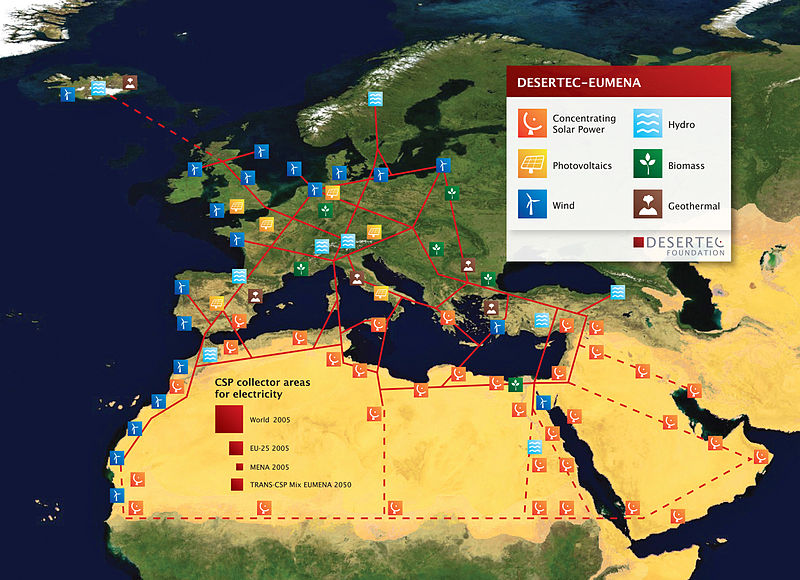
A large power network with very low electricity losses allows clean electricity to be generated from renewable sources at the most advantageous locations. The type of technology used on site depends on local circumstances, as well as on the wishes of the country concerned and the investors.
In desert regions near the coast, solar-thermal power plants can be combined with seawater desalination so that they not only produce electricity, but also drinking water. Air-cooled solar-thermal power plants combined with water-saving cleaning robots are particularly useful in desert locations inland. Many coastal areas are excellent locations for inexpensive wind power plants. Photovoltaic systems are useful for covering peak mid-day demand, for example from air conditioning systems. Solar-thermal power plants, as well as biomass, geothermal, hydroelectric and pumped storage plants, provide valuable, controllable electricity. This means they can be used to balance out the fluctuations of wind and photovoltaic power, so that more of these variable energy sources can be used in the future electricity mix.
Lot's more on their site: http://www.desertec.org/concept/questions-answers/
Also: http://en.wikipedia.org/wiki/Desertec
It has been subject to some criticism from people in North Africa
http://www.spiegel.de/international/eur ... 92332.html
But I'm not sure there is anything wrong with the concept so long as the benefits are equitably shared.
Relies on international co-operation, but maybe that's a good thing?
What does the panel think?
